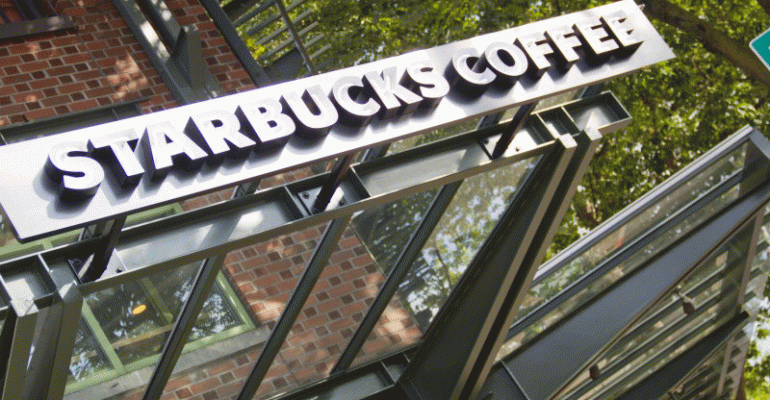Next year Starbucks plans to shutter 150 stores, three times the average number of store closures the coffeehouse giant has in a typical fiscal period.
The closures were revealed Tuesday afternoon as part of a three-pronged plan to boost shareholder value. The company said it normally closes about 50 stores in a fiscal year. However, for the year ending 2019, the Seattle-based coffeehouse company said it will close underperforming stores in the brand’s “most densely penetrated markets,” where certain factors such as wage pressure are making those stores unprofitable.
The chain also plans to slow down license store growth by roughly 100 stores.
Growth, instead, will focus on adding new company-operated locations in underpenetrated markets in the U.S. In addition, global growth will increase in China, where the company is opening a cafe every 15 hours.
“Our job is to make sure we are targeting the right geographies,” CEO Kevin Johnson said.
The company, during the 18th annual Oppenheimer Consumer Conference, said it “now anticipates 1 percent growth in comparable store sales globally in Q3 FY18.”
Johnson said he is not going to blame the Philadelphia racial bias incident for the low comps.
“It is not an excuse,” he said. “I expect better. Our shareholders deserve better.”
The company said its main goal is to sharpen “the focus on increasing shareholder returns,” which are lagging and not reaching full potential.
“While certain demand headwinds are transitory, and some of our cost increases are appropriate investments for the future, our recent performance does not reflect the potential of our exceptional brand and is not acceptable,” said Johnson said in a statement. “We must move faster to address the more rapidly changing preferences and needs of our customers. Over the past year we have taken several actions to streamline the company, positioning us to increase our innovation agility as an organization and enhance focus on our core value drivers which serve as the foundation to re-accelerate growth and create long-term shareholder value.”
In the U.S., it is important to adapt to ever changing consumer trends, which include delivery, establishing stronger digital relationships, premiumization, and being more convenient, Johnson said. In one example, he said Starbucks is testing a store in Manhattan that is a pickup location only for mobile orders.
Since April, when the brand launched a new digitally-focused happy hour, and made it easier for customers to order through its app, Starbucks has added 5 million new digitally registered customers.
In a report issued after the Oppenheimer conference, analyst Mark Kalinowski said Starbucks is facing inconsistencies in many stores when it comes to mobile order and pay. Specifically, the pickup area for customers is random. In a store in California, a sign told customers that the mobile order pick-up area had relocated near the oven, he noted in a previous report.
The customer experience with mobile order and pay “simply needs improvement,” said Kalinowski, president and founder of Kalinowski Equity Research.
He also speculated that McDonald’s is hurting Starbucks.
“With McDonald’s U.S. business focusing more and more on winning back traffic — in part by making itself more of a beverage destination — is this hurting Starbucks to some degree?” he said in his report.
A third initiative outlined was accelerating the brand’s consumer packaged goods presence through Nestle.
Last month, Nestlé said it would pay Starbucks $7.15 billion for the rights to market, sell, and distribute at-home packaged coffee and tea for the following brands: Starbucks, Seattle’s Best Coffee, Starbucks Reserve, Teavana, Starbucks VIA and Torrefazione Italia.
Domestic sales for the coffee segment as a whole were up 1 percent for the year ended April 2018, for a total of 8.2 billion servings of coffee, according to market research firm The NPD Group. U.S. unit count for chain coffee shops increased by 2 percent to 18,543 units during the period, NPD said, while independent coffee shops declined 5 percent to 15,494 units.
Starbucks has more than 28,000 locations worldwide, including nearly 14,000 in the U.S.
Contact Nancy Luna at [email protected]
Follow her on Twitter: @FastFoodMaven




